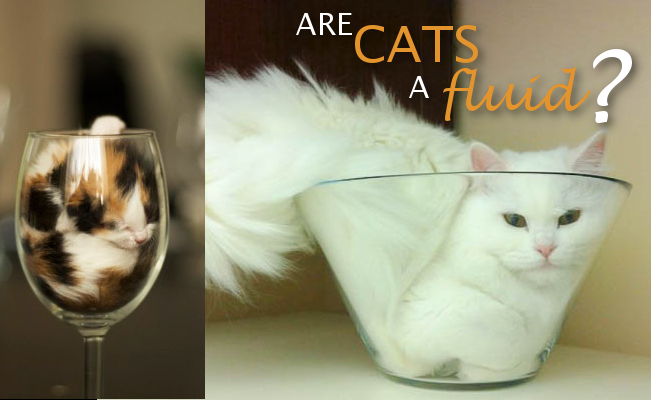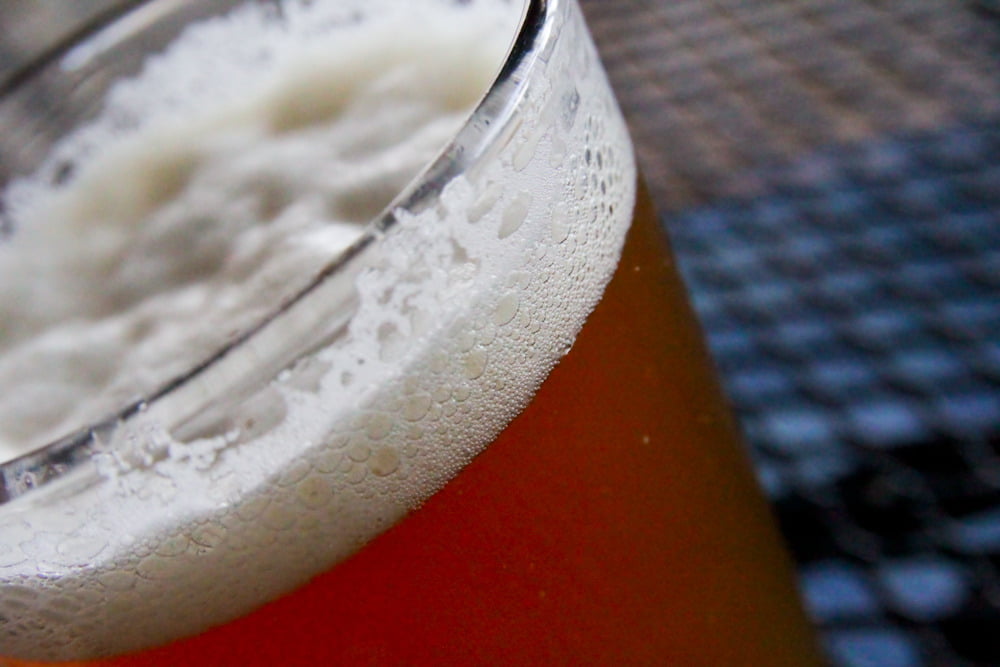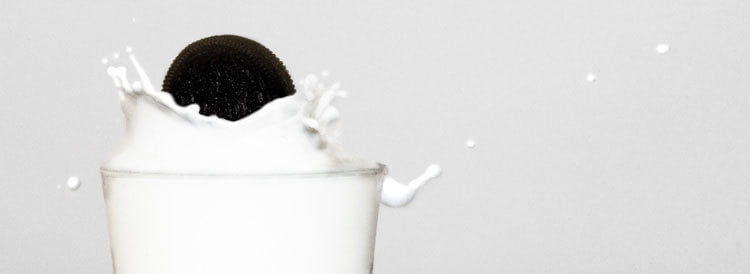Not all microfluidic devices use tiny channels to pump and mix fluids. Some, like the Vortex Fluidic Device (VFD), conduct their microfluidic mixing in thin films of fluid. The VFD is essentially a tube spinning at several thousand RPM that can be tilted to various angles. Coriolis forces, shear, and Faraday instabilities in the thin fluid film create a complex microfluidic flow field that’s excellent for mixing, crystallization, and processing of injected chemicals. One rather notorious application of this device was unboiling an egg, a feat for which the researchers won an Ig Nobel Prize. But other, more practical applications abound, including a waste-free method for coating particles. (Image and research credit: T. Alharbi et al.; video credit: Flinders University; via Cosmos; submitted by Marc A.)
Tag: Ig Nobel Prize

Unboiling an Egg
Cooking is something we think of as a one-way process. You add heat to food, it changes forms, and there’s undoing that. But that process is less one-directional than we thought, at least in some cases. Take boiling an egg. When you add heat to egg whites, it breaks down bonds between the folded proteins and lets those proteins build more bonds with other sections of proteins, eventually solidifying into a seemingly unbreakable mess. You can’t break those bonds by adding or removing thermal energy, but you can shake the proteins apart and refold them into their original shapes.
Researchers accomplish this by putting the boiled egg whites in a solution of water and urea and spinning them. When they spin the fluid mixture, the fluid near the wall spins faster than the fluid in the center of the vial, which creates shear stress. That shear stress helps untangle the proteins and reform them into their original shape–thereby unboiling the egg white. Now you definitely don’t want to eat the results – urea is, of course, a component of urine – but it does demonstrate that fluid dynamics can be used to reverse chemical processes we thought were irreversible. And that surprising discovery nabbed the researchers an Ig Nobel Prize in 2015. (Video credit: TedEd/E. Nelson; research credit: T. Yuan et al.)

Are Cats a Fluid?
Are cats a fluid? It’s a question that has inspired many a meme. There are a few common definitions as to what makes a fluid. One is that a fluid changes its shape to that of its container. Another more technical definition is that a fluid deforms continuously under shear forces. But the real picture is messier than these seemingly simple definitions allow for. On the Improbable Research podcast, I tackle the question of whether cats are a solid or a fluid and what fluid dynamics–specifically, the subject of rheology–has to teach us about the topic. Give it a listen! (Original image credits: Huffington Post; imgur; research credit: M. A. Fardin, pdf – article begins on page 16)
Post-Thanksgiving bonus: Today is the traditional Science Friday broadcast of this year’s (abridged) Ig Nobel Prize ceremony. Check your local NPR station for broadcast times or listen to it on their website. You’ll hear me deliver a 24/7 lecture on the subject of “Fluid Dynamics” (and you may find me cropping up elsewhere, too). Alternatively, you can check out the full ceremony video on YouTube.

The Law of Urination
Tonight is the 26th Ig Nobel Prize ceremony. As I’ve covered previously, the subject of fluid dynamics has been quite successful at winning these awards designed to “make people LAUGH, then THINK,” and last year’s ceremony was no exception. Georgia Tech researchers won the Physics Prize last year for explaining why mammals of very different sizes all urinate for roughly 21 seconds.
Urination is a gravity-driven process, and larger animals have longer urethras, which means that gravity will have more time to accelerate fluid flowing from the the bladder to, well, the exit. Thus, larger animals will have higher flow rates. This allows them to empty their bigger bladders in essentially the same amount of time as a smaller animal. Recognizing this pattern can be helpful to both veterinarians diagnosing problems in animals and to engineers designing systems to move fluids efficiently.
There’s no way to know whether fluid dynamics will win another Ig Nobel Prize tonight, but I can guarantee that subject will come up. I’ll be giving a 24/7 lecture on Fluid Dynamics during tonight’s Ig Nobel Prize ceremony. You can see me – and find out this year’s winners – by watching the ceremony webcast here starting at 5:40pm EDT. (Video credit: DNews; research credit: P. Yang et al.)

Reader Question: Shower Curtains
Reader thansy asks:
Why do the bottoms of shower curtains drift in toward the water coming from the shower head?
We all know that moment. You’re minding your own business, scrubbing away, and all of a sudden, the shower curtain billows up and grabs you. Scientists have debated the cause of this behavior for years. Some argued that the curtain billowed due to hot air rising from the shower. Others claimed the fast-moving spray caused lift that pulled the curtain up. But fifteen years ago, one scientist tackled the problem computationally. He performed a numerical simulation of a shower head spraying into a bath and found that this spray of droplets creates a weak horizontal vortex in the shower.

This shower vortex has a low-pressure core at the middle, which is thought to provide the suction that causes the shower curtain to billow. The scientist, David Schmidt, was awarded the 2001 Ig Nobel Prize for his work. (Image credits: N. Paix, D. Schmidt; research credit: D. Schmidt)

Other Ig Nobel Fluids
To round out our series on fluid dynamics in the Ig Nobel Prizes (which are not the same thing as the actual Nobel Prizes), here are some of the other winners. Last year Mayer and Krechetnikov won for a study on coffee sloshing when people walk. We’ve mentioned the pitch-drop experiment measuring the viscosity of an extremely viscous fluid a couple times; Mainstone and Parnell won a 2005 Ig Nobel for that (on-going) work. Another 2005 prize went to Meyer-Rochow and Gal for calculating the pressures involved in penguin defecation. (Yes, seriously.) A avian-related award was also handed out to B. Vonnegut for estimating tornado wind speeds by their ability to strip a chicken of its feathers. And, finally, for those looking to interest undergraduate lab students in mathematics and fluid dynamics, I suggest following the lead of 2002 winner A. Leike who demonstrates laws of exponential decay with beer head. (Photo credit: S. Depolo)

Ig Nobel Fluids: Shower Curtain Science
Nearly everyone has faced the frustration of a shower curtain billowing inwards to stick to one’s leg. Various explanations have been offered to explain the effect, but David Schmidt won the 2001 Ig Nobel Prize in Physics for a numerical simulation suggesting that the spray of droplets from the shower head drives a horizontal vortex whose axis of rotation is perpendicular to the shower curtain. Since vortices have a low-pressure region in their core, this weak shower vortex has the power to suck a light curtain inward, much to the chagrin of the shower’s occupant. Of course, a heavier or weighted shower curtain will help avoid the effect. This post is part of a series on fluids-related Ig Nobel Prizes. (Photo credit: W. Taylor; research credit: D. Schmidt)

Ig Nobel Fluids: Swimming in Syrup
Does a person swim faster in water or syrup? One expects the more viscous syrup would offer a swimmer greater resistance, but, at the same time, it could also provide more to push against. Gettelfinger and Cussler put this to a test experimentally with competitive and recreational swimmers in a pool of water and in one with a fluid measuring roughly twice the viscosity of water. Their results showed no significant change in swimming speed. When you consider that human swimming is highly turbulent, however, the result makes sense. In fluid dynamics, the dimensionless Reynolds number represents a ratio between inertial forces and viscous forces in a flow. The researchers estimate a Reynolds number of a typical human in water at 600,000, meaning that inertial effects far outweigh viscous effects. In this case, doubling the viscosity only reduces the Reynolds number by half, leaving it still well inside the turbulent range. Thus, swimming in syrup has little effect on humans. The Mythbusters also tackled this problem, with similar conclusions. This is a continuation of a series on fluids-related Ig Nobel Prizes. (Photo credit: Mythbusters/Discovery Channel; research credit: B. Gettelfinger and E. L. Cussler, winners of the 2005 Ig Nobel Prize in Chemistry)

Ig Nobel Fluids: Cookie Dunking
Back in 1999 Len Fisher earned an Ig Nobel Prize in Physics for explaining the physics of dunking a biscuit or cookie in a liquid. The cookie is porous, with many tiny, interconnecting channels run throughout it. When dipped in a liquid, capillary action pulls the fluid up into these channels against the force of gravity. As most people discover, this wetting can soften the cookie to the point of collapse. The optimal manner of dunking then is to hold the cookie at a shallow angle; this allows the lower surface to soak in milk (or the hot beverage of your choice) while keeping the upper surface dry and structurally sound. Fisher further argued that Washburn’s equation, which describes the time necessary for capillary action to draw a liquid up a given length of a cylindrical pore gives a good estimate of the length of time for a cookie dunking. This proved so popular he even wrote a book about it. This is a part of a series on fluids-related Ig Nobel Prizes. (Photo credit: C. Lindberg; research credit: L. Fisher)

Ig Nobel Fluids: Running on Water
While insects are small enough to use surface tension to stay atop water, larger species like the basilisk lizard run on water by slapping their feet against the surface hard enough to generate the force to stay above the surface. A. Minetti and colleagues won this year’s Ig Nobel Prize in Physics for demonstrating that humans, too, can achieve this feat – when outfitted with stiff, large area fins and exposed to gravity less than 22% of Earth’s. The researchers adapted a model for the running lizard to human scales and then tested the model using subjects suspended by harness and running in place atop a wading pool while subjected to various lighter-than-earth simulated gravities. Both the model and experiment agreed that human muscles were unable to produce sufficient force to stay above the water at higher than 0.22g. Interestingly, the authors also observed that the water-running gait for both lizards and humans has more in common with the pedaling motion of cycling than a human’s bouncing gait for terrestrial running. (Video credit: A. Minetti et al.)









